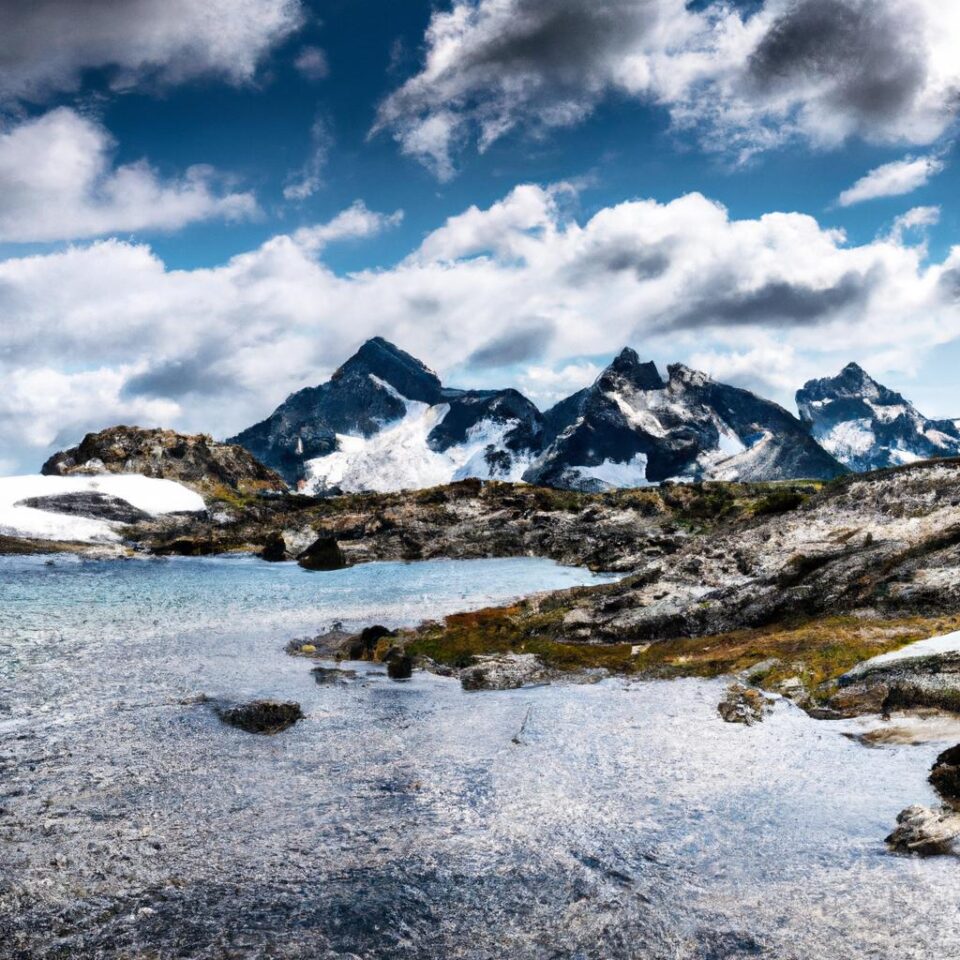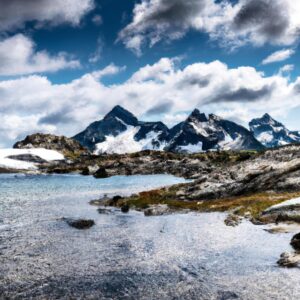Introduction
Landscape photography is an art form that can capture nature’s beauty and tell stories about the world around us. Whether you’re captivated by a stunning sunset, an expanse of meadows, or a distant mountain range, taking quality photographs of landscapes can be incredibly rewarding. This guide can help you understand the basics of taking great landscape photos and become a more confident photographer.
The tips in this guide will help you understand the necessary equipment, settings, and techniques for creating stunning landscape photos. We’ll discuss the importance of composition and give advice on shooting in different lighting conditions. Additionally, we’ll explain how editing and post-processing software can enhance your images. By the end of this guide, you’ll have a good understanding of how to take beautiful landscape photographs.
Understanding Equipment
If you want stunning landscape photographs, the first step is to have the right equipment. There are different types of cameras that you can use for landscape photography, and it’s important to choose the right one.
Point-and-shoot cameras are usually more affordable and easy to use for beginners. But if you want higher quality images with more control over settings, DSLR cameras (Digital Single-Lens Reflex) are your best bet. Professional-quality landscape photographs might require a medium format camera or alternative camera system.
Once you have selected the type of camera you want to use, it’s important to select the right lens. A wide-angle lens is an essential piece of equipment for capturing vast landscapes. Other optional lenses include telephoto lenses for capturing small details in the distance, and fisheye lenses for creating unique effects.
By selecting the right camera, you can set yourself up to capture stunning landscape photographs.
Get to Know Your Subject Matter
Before you point your camera at a landscape, take the time to get to know it. To get the best out of your photos, it’s important to understand your subject matter. Learn about the elements that make it unique; the colour, the structure, the texture, and the shapes. Notice how the light is changing as the day progresses so you can find that special illumination to help make your photos stand out.
Take a walk around the area: what’s the terrain like? Is there an interesting foreground element that can set your shot apart from the rest? Understanding your surroundings will help you create an image that captures the beauty of your subject and intrigues viewers.
- Take time to observe your subject matter before pointing the camera.
- Research the area and understand the elements that make it special.
- Notice how the light changes throughout the day.
- Look for interesting foreground elements that can add depth and impact to your shot.
Using the Right Settings to Capture Quality Photos
Taking a stunning landscape photo is all about getting the settings right! Knowing which settings to use and when can be the difference between an average shot and a beautiful photograph. Here we will take a look at the key settings that need to be adjusted to capture quality landscape photos.
Aperture controls how much of the image is in focus and helps to separate the foreground from the background. A lower aperture creates a larger focused area and a higher aperture reduces the focus area. Shutter speed affects the amount of light entering the camera, with slower shutter speeds allowing more light and faster shutter speeds blocking more light. ISO determines the overall sensitivity of the camera to light. When the ISO is low, the camera will be less sensitive to light, but when it is high, the camera will be more sensitive. Lastly, white balance adjusts the colors of the photo to give them a more natural look.
Keep these settings in mind when you’re shooting a landscape photo! When used correctly, they can help create stunning images that truly capture the beauty of nature.
Using a Tripod
A tripod is an essential tool for capturing sharp and detailed landscape photos. It can help reduce camera shake and keep your images level when shooting in low light or long exposures.
When considering a tripod for landscape photography, look for one that is sturdy and lightweight. Look for models made of aluminum, as they are the most durable and resistant to weather conditions. Make sure to choose a tripod with adjustable legs, so you can set it up on uneven surfaces easily. Additionally, a center column that can be inverted is a great feature to have, as it gives you more versatility in shooting angles.
Using a tripod also greatly reduces the amount of time required to set up and adjust your camera before taking a shot. And if you plan to capture multiple shots of the same scene at different exposures or angles, a tripod is invaluable. With a tripod, you don’t have to constantly readjust your camera between each shot.
Overall, it’s important to have a tripod in your landscape photography arsenal. A good-quality tripod not only helps you create sharper images, but also makes it easier to get the perfect shot.
Composition
Composition is all about how you arrange the elements within your photograph. It involves determining the best way of placing the subject in the frame and guiding the viewer’s eye to it. Some common composition techniques used in landscape photography are leading lines, level horizons, and the rule of thirds.
Leading Lines
Leading lines draw the viewer’s eye to the main point of interest in the photo. This could be a road, a river, a line of trees, or anything else that can create a natural line which directs the eye towards your subject. When positioning your subject in the frame, consider the power of lines to create a strong composition.
Level Horizons
Landscapes often contain an expanse of horizontal lines, such as a horizon, shoreline, or pavement. These lines should always be perfectly level when composing the shot so they don’t appear distorted. To achieve this, use the horizon line indicator on your camera display and adjust the camera angle accordingly.
The Rule of Thirds
The rule of thirds is a powerful tool for creating dynamic compositions. To use this technique, imagine dividing the image into nine equal parts using two vertical and two horizontal lines, then position the subject at one of the intersection points. This will help the photograph appear balanced and natural, while still providing enough negative space to tell the story.
Taking the Photo
When it comes time to take the photo, there are some key things to keep in mind for capturing stunning landscape shots. Start by checking your camera’s level and making sure the horizon is straight. It’s important to take multiple shots of the same scene from slightly different angles as well. Taking multiple shots helps ensure you get the perfect shot, without having to retake the image due to an error.
When taking the picture, be aware of the movement within the frame. Wind can cause plants to sway and water to ripple – both of which can ruin a good shot. You’ll also want to make sure to hold the camera steady to avoid motion blur or camera shake. It’s best to use a tripod or set your camera on a stable surface when taking the image.
Finally, don’t forget to enjoy the moment and take time to appreciate the beauty you are capturing. Doing so can help you create photographs that have more depth and emotion, resulting in images that truly capture the essence of a landscape.
Editing & Post-Processing
Editing and post-processing are essential skills for creating stunning landscape photographs. With the right software, you can transform an ordinary image into a work of art. Digital editing and post-processing allow you to adjust the tones, colors, brightness, and contrast of an image to enhance its visual appeal. It also lets you add special effects and filters to make your photo stand out.
To get the most out of your images, it’s important to understand the different types of software available and the best practices for working with them. Popular software used in digital photography includes Photoshop, Pixlr, and GIMP. While these programs can be intimidating at first, they are easy to learn if you take the time to read tutorials and practice with sample images.
When editing photos, it’s important to make subtle adjustments. Small changes in color, lighting, and contrast can make a big difference in the final result. Don’t be afraid to experiment and try different techniques. Once you understand the basics, you’ll be able to bring out the best in your landscape photos.
Tips for Different Lighting Conditions
Lighting plays an important role in landscape photography. The right lighting can add drama and emotion to your photos, while the wrong lighting can ruin a great shot. To capture the best possible images, it’s important to understand the different lighting conditions and how to adjust your settings accordingly.
In sunny or bright conditions, bolster the whites and boost the contrast of colors to bring out the details in the sky and land. For stormy days, use a longer shutter speed and lower ISO to capture the drama of the sky and create soft flowing water. For night shots, use a tripod and the lowest ISO setting possible to create vibrant star trails in the sky.
It’s also important to pay attention to the direction of the light when shooting landscapes. Side or backlighting can help separate your subject from the background, while direct light can cast strong shadows and hard contrasts.
By familiarizing yourself with different types of lighting and adjusting your camera settings accordingly, you will be able to capture stunning landscape photos in any light.
Working with Seasons
When you’re capturing stunning landscape photos, it helps to take advantage of seasonal changes. Depending on the time of year, different natural elements will be present and give you a variety of photographic opportunities.
For example, during spring and summer months, trees are in bloom which can create an amazing backdrop for your landscape photos. In the autumn, colorful foliage provides a stunning contrast to a landscape. During winter, snow-covered scenes can be incredibly beautiful and captivating.
No matter what season you are shooting in, there are creative ways to capture landscape photos. Taking advantage of weather conditions can help you create unique photos, such as misty or foggy scenes. Also, using interesting foreground subjects can add depth to your shots and make them stand out from the crowd.
By understanding the natural elements that come with each season, you can create stunning photos that showcase nature’s beauty in all its glory.
Other Considerations
Capturing the perfect landscape photo can require a lot more than just having the right equipment. Here are some other helpful tips that you should consider:
- Reaching Difficult Locations: Scenic landscapes can be difficult to access, so come prepared with proper clothing and gear. Climbing equipment and backpacks may be necessary for difficult or remote locations.
- Incorporating Water Features: Landscape photos often look best when there is a water feature present. Whether it’s a river, lake, waterfall, or ocean, find ways to incorporate them into your shots for maximum impact.
Conclusion
Capturing stunning landscapes is an art, but with the right equipment, knowledge and techniques, anyone can create beautiful photographs of nature. By studying your subject matter and using the right settings, composition and technique, you can take amazing photos regardless of the lighting conditions or time of year. Don’t be afraid to experiment and practice – with a bit of luck and perseverance, you’ll soon be capturing impressive landscape shots of your own.
comments: 0

